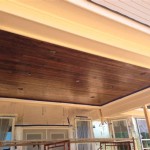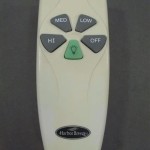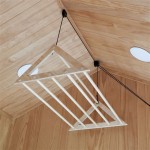Integrating HVAC Vents with Ceiling Fans: A Comprehensive Guide
The integration of Heating, Ventilation, and Air Conditioning (HVAC) systems with ceiling fans presents opportunities for enhanced climate control and energy efficiency within residential and commercial spaces. Strategic placement of HVAC vents in relation to ceiling fans can significantly impact airflow, temperature distribution, and overall comfort. This article provides a comprehensive guide to installing HVAC vents in conjunction with ceiling fans, addressing key considerations, installation techniques, and potential benefits.
Understanding the Synergistic Relationship Between HVAC Vents and Ceiling Fans
HVAC systems are designed to deliver conditioned air – either heated or cooled – into a space. Typically, this is achieved through a network of ducts and vents strategically positioned throughout the building. Ceiling fans, on the other hand, circulate air within a room, helping to distribute conditioned air and reduce temperature stratification. When these two systems are properly integrated, they can work in tandem to create a more comfortable and energy-efficient environment.
Without a ceiling fan, conditioned air from HVAC vents may linger near the delivery point, resulting in uneven temperature distribution. In the summer, cool air tends to settle near the floor, while warm air rises to the ceiling. A ceiling fan helps to break up this stratification by pushing the warm air down and drawing the cool air upwards, resulting in a more uniform temperature throughout the room. Conversely, in the winter, the fan can be used to push warm air that has risen to the ceiling back down to the living space.
The effectiveness of this integration relies heavily on the placement of HVAC vents in relation to the ceiling fan. Poor placement can actually hinder the intended effect, leading to inefficient airflow and diminished comfort.
Key Considerations for HVAC Vent and Ceiling Fan Placement
Before commencing any installation, careful consideration must be given to several factors that will influence the optimal placement of HVAC vents and the selection of a suitable ceiling fan. These factors include room size, ceiling height, existing HVAC infrastructure, and the intended use of the space.
Room Size and Layout: The dimensions of the room will dictate the size and number of HVAC vents required, as well as the appropriate size of the ceiling fan. Larger rooms will generally require more vents and a larger fan to ensure adequate airflow. The layout of the room, including the placement of furniture and other obstructions, should also be considered, as these can impede airflow and necessitate adjustments to vent and fan placement.
Ceiling Height: Ceiling height is a critical factor in determining the optimal distance between the ceiling fan and the floor. Standard ceiling heights (around 8 feet) typically require a flush-mount or low-profile ceiling fan to provide adequate clearance. Higher ceilings may necessitate the use of a downrod to lower the fan and improve its effectiveness. The placement of HVAC vents should be adjusted accordingly to ensure that the airflow from the vents is effectively circulated by the fan.
Existing HVAC Infrastructure: The existing ductwork and vent locations may impose limitations on where new vents can be installed. It is important to assess the feasibility of adding new vents or relocating existing ones based on the existing infrastructure. Consult with an HVAC professional to determine the best approach for integrating new vents with the existing system.
Intended Use of the Space: The primary function of the room will influence the desired temperature and airflow patterns. For example, a bedroom may require a quieter fan and vents positioned to avoid directly blowing air onto the occupants while sleeping. A living room may benefit from a more powerful fan and vents strategically placed to maximize airflow and comfort for multiple occupants.
Installation Techniques for HVAC Vents in Conjunction with Ceiling Fans
The installation of HVAC vents and ceiling fans should be approached systematically, ensuring adherence to safety protocols and local building codes. The following steps outline a general procedure for installing HVAC vents in conjunction with ceiling fans:
1. Planning and Preparation: Begin by creating a detailed plan that outlines the location of the new HVAC vents and the ceiling fan. Consider the factors discussed earlier, such as room size, ceiling height, and existing infrastructure. Consult with an HVAC professional to ensure that the planned installation is feasible and meets all applicable codes. Once the plan is finalized, gather the necessary tools and materials, including ductwork, vents, ceiling fan, wiring, and safety equipment.
2. Installing the Ceiling Fan: Before installing the HVAC vents, install the ceiling fan according to the manufacturer's instructions. Ensure that the fan is securely mounted to a structural support in the ceiling and that all electrical connections are properly made. Test the fan to ensure that it is functioning correctly before proceeding with the vent installation.
3. Cutting the Vent Openings: Using a drywall saw or a similar tool, carefully cut the openings for the new HVAC vents in the ceiling. The size and shape of the openings should match the dimensions of the vents being installed. Take care to avoid damaging any existing wiring or plumbing that may be located within the ceiling cavity.
4. Installing the Ductwork: Connect the new HVAC vents to the existing ductwork using flexible or rigid ducting. Ensure that all connections are airtight and properly sealed to prevent air leakage. Use duct tape or mastic to seal any gaps or seams in the ductwork. The routing of the ductwork should be planned to minimize bends and obstructions, which can restrict airflow.
5. Installing the Vents: Secure the HVAC vents into the prepared openings using screws or clips. Ensure that the vents are flush with the ceiling surface and that they are properly aligned. Adjust the dampers on the vents to control the direction and volume of airflow. The orientation of the vents should be considered in relation to the ceiling fan to maximize its effectiveness in distributing the conditioned air.
6. Testing and Adjustment: Once the installation is complete, test the HVAC system and the ceiling fan to ensure that they are functioning correctly. Use a thermometer to measure the temperature at various points in the room and adjust the vent dampers and fan speed as needed to achieve optimal temperature distribution. Monitor the system over time and make further adjustments as necessary to maintain a comfortable and energy-efficient environment.
Optimizing Airflow for Enhanced Comfort and Efficiency
The placement and adjustment of HVAC vents in relation to a ceiling fan can significantly impact airflow patterns within a room. The goal is to create a consistent and comfortable temperature throughout the space by maximizing the circulation of conditioned air and minimizing temperature stratification.
Strategic Vent Placement: Vents should be positioned to complement the airflow generated by the ceiling fan. In general, vents should be placed away from the direct path of the fan's blades to avoid disrupting the airflow. For example, vents located near the perimeter of the room can direct air towards the center of the space, where the fan can then circulate it more effectively.
Adjusting Vent Dampers: The dampers on the HVAC vents can be adjusted to control the direction and volume of airflow. In the summer, dampers can be adjusted to direct cool air upwards, towards the ceiling fan, which will then circulate it throughout the room. In the winter, dampers can be adjusted to direct warm air downwards, towards the floor, where it will help to warm the living space.
Ceiling Fan Direction: The direction of the ceiling fan's rotation should be adjusted seasonally to optimize airflow. In the summer, the fan should rotate counterclockwise to create a downdraft that helps to cool the room. In the winter, the fan should rotate clockwise at a low speed to create an updraft that helps to distribute warm air throughout the room.
Regular Maintenance: Regular maintenance of both the HVAC system and the ceiling fan is essential for maintaining optimal performance. This includes cleaning the fan blades and vents regularly to remove dust and debris, which can impede airflow. It also includes inspecting the ductwork for leaks and making any necessary repairs. Regular maintenance will help to ensure that the system is operating efficiently and effectively, providing a comfortable and energy-efficient environment.
By carefully considering the principles outlined in this guide, homeowners and contractors can effectively integrate HVAC vents with ceiling fans to create a more comfortable, energy-efficient, and aesthetically pleasing living or working space. It is always recommended to consult with qualified professionals for specific project planning and execution.

How To Add A Vent Existing Ductwork Diy Oliver

Add New Ceiling Return To Existing Hvac System Diy Oliver

How To Install An Aria Vent Flush Exhaust Cover

Guide To Installing A Ducted Air Conditioning System

Installing An Hvac Supply Register Airtec In The Ceiling Cutting Hole Connecting Flex Duct

Revair Making Air Look Good

Indoor Installing Central Air Conditioning Vents On The Wall Premium Photo

Quick Ceiling Vent Fix

Revair Making Air Look Good

4 Telltale Signs Your Air Ducts Are Dirty In Haltom City Tx
Related Posts








